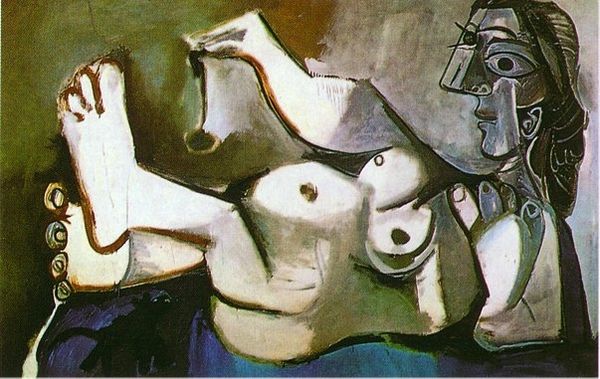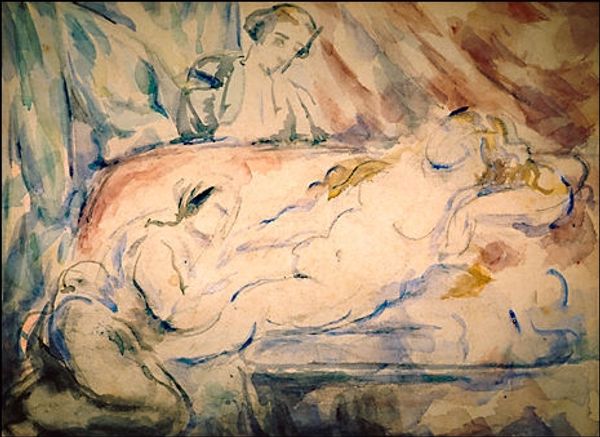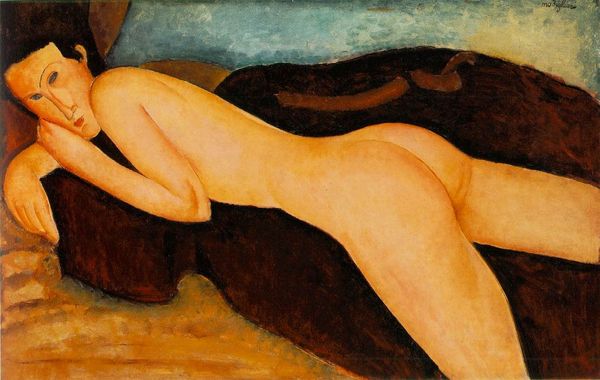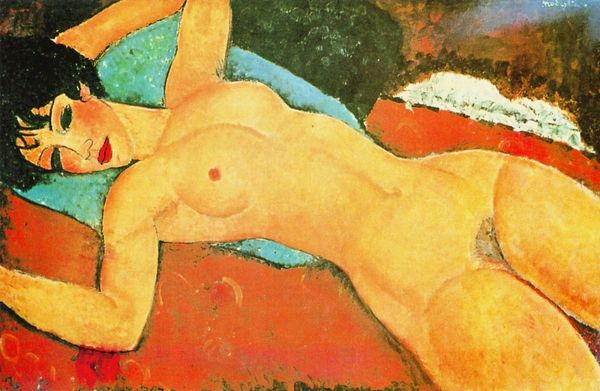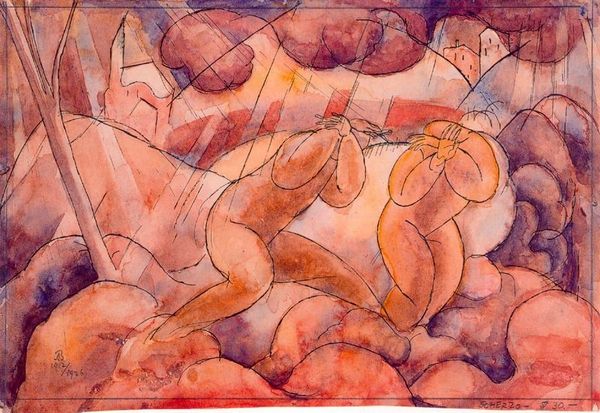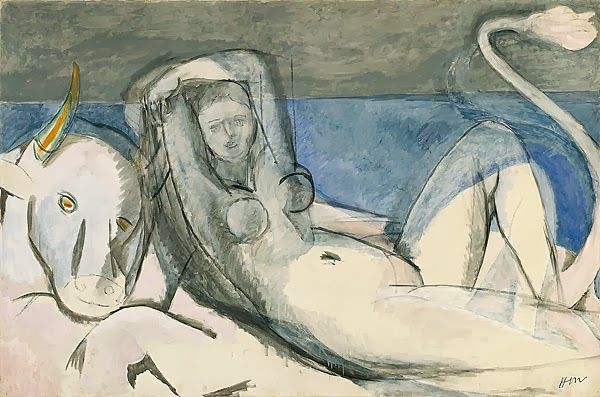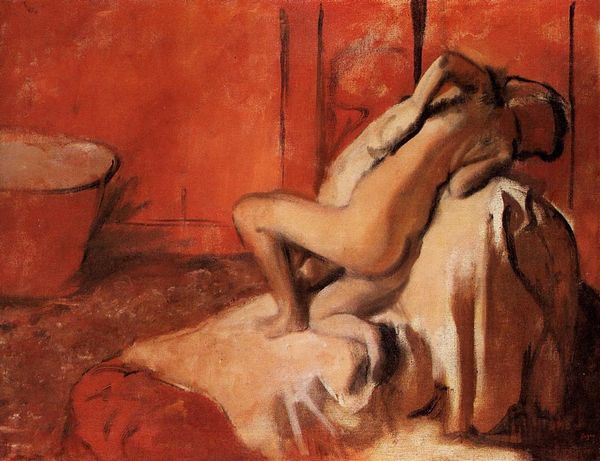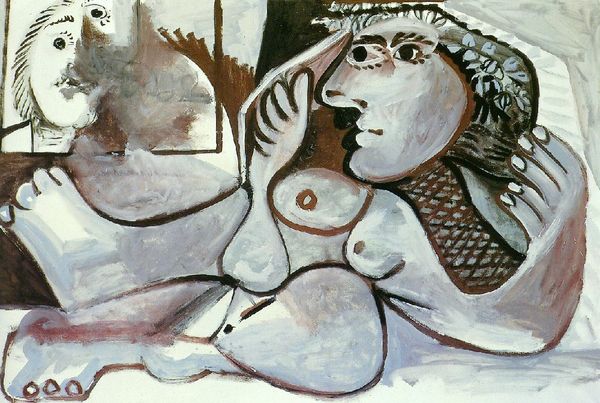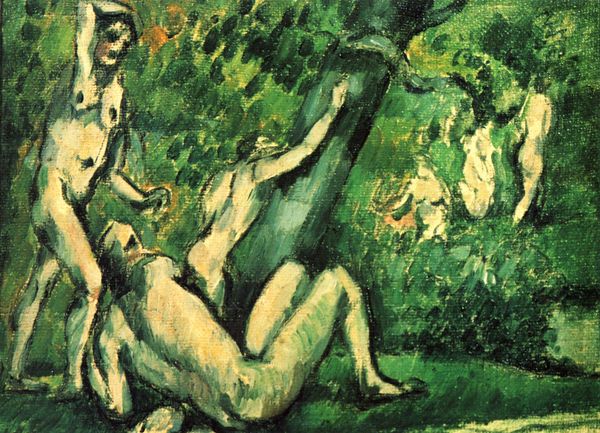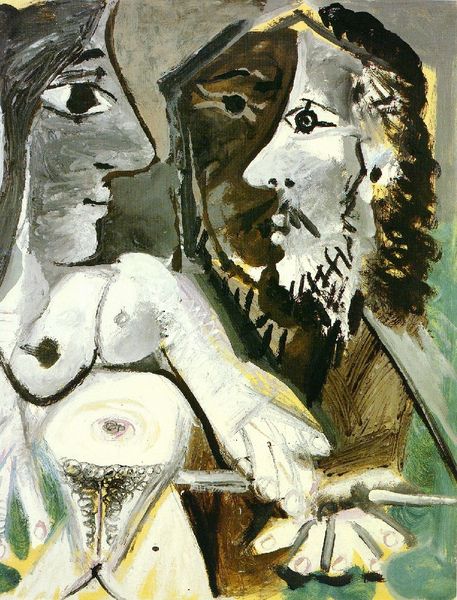
#
abstract painting
#
charcoal drawing
#
possibly oil pastel
#
charcoal art
#
handmade artwork painting
#
oil painting
#
female-nude
#
fluid art
#
acrylic on canvas
#
underpainting
#
portrait art
Dimensions: 65 x 100 cm
Copyright: Pablo Picasso,Fair Use
Curator: It’s tempting to simply say "that’s Picasso," isn’t it? But let’s dig a bit deeper. Here we have, “Lying female nude” painted in 1964, an oil on canvas piece very characteristic of his late period. Editor: Yes, unmistakably Picasso. It's like a memory surfacing—fragments of a face, a limb, emotions distilled to their rawest form, all swirling together on the canvas. Kind of unnerving and intimate all at once, don’t you think? Curator: Unnerving, yes, definitely an interesting choice of words, it captures how Picasso, even in his later works, deconstructs the classical form of the female nude. There's this sense of almost aggressive seeing, not just depicting what's in front of him but dissecting the very idea of representation. Editor: Exactly! It's not a simple, pleasing nude, you know, like the kind you might hang over your sofa to look pretty. This one, she’s almost confrontational. She disrupts the harmony, dares you to look, and makes you a little uneasy about it. All those swirling lines make me feel disoriented like the figure is almost trying to break out from the constraints of her being. Curator: The style reflects, of course, a long arc of exploration into form and meaning. There’s the obvious nod to Cubism. Note also how he used contrasting values. Light and dark clash, heightening the sense of conflict and drama in what otherwise might have been a rather banal scene. Editor: And there's this strange sort of playful morbidity that just screams Picasso to me! The flattening of forms and simultaneous viewpoints reminds us that seeing is not a passive thing, we each bring our biases, desires, and fears to how we interpret art. Also it has that dark color palette that he uses that kind of is eerie if you let yourself sit with it and think a little bit. It really grows on you. Curator: Absolutely. It’s the painting that keeps giving back with repeated encounters; constantly disrupting, deconstructing. Always provocative. I appreciate your comment on playfulness—it's definitely evident within the whole of his body of work, which often contrasts with the serious attention given it by art scholars. Editor: It's interesting to consider art with that lens, breaking down an artwork and understanding why an artist chose a certain shape or form. Art lives in the artist's choice and what you're choosing. Curator: Yes. Perhaps this is Picasso stripping down not only the form, but also pre-existing narratives and biases associated with the female nude. Editor: Yes. Thank you.
Comments
No comments
Be the first to comment and join the conversation on the ultimate creative platform.
